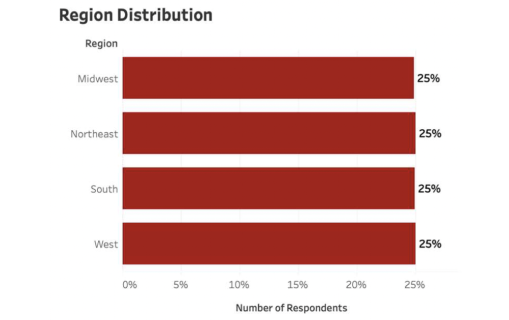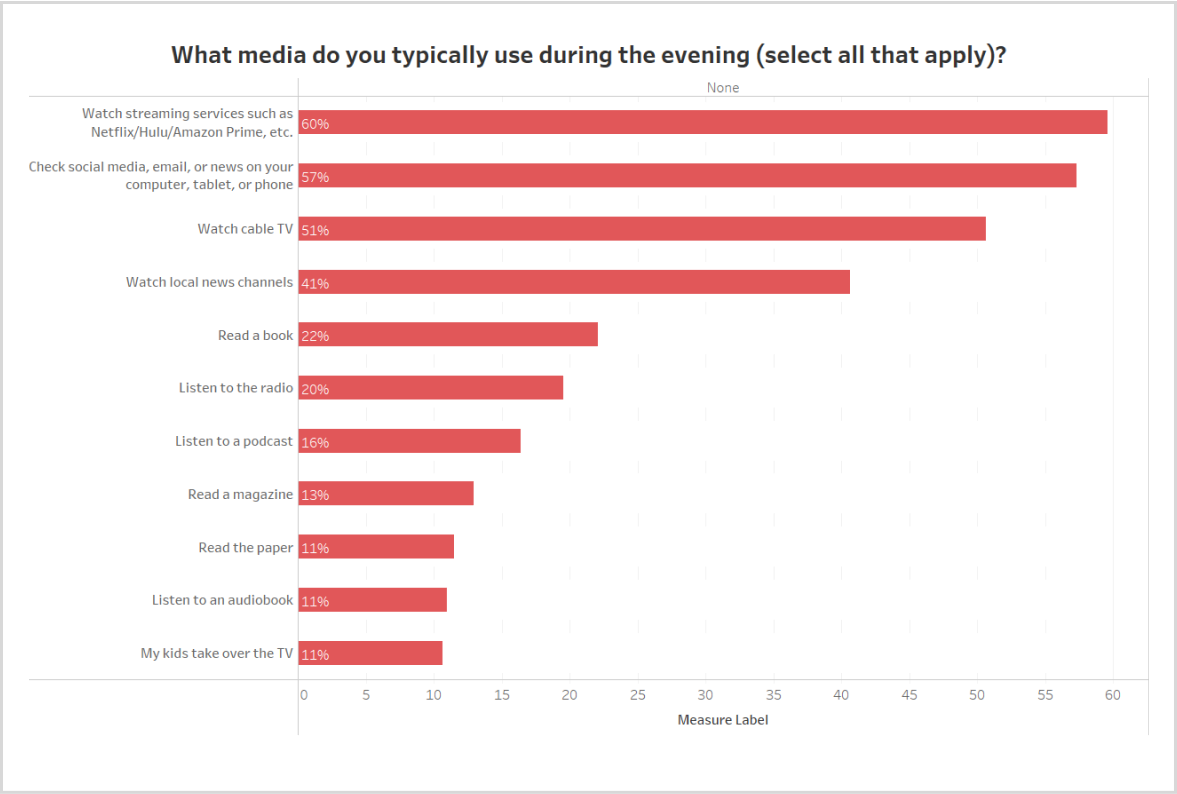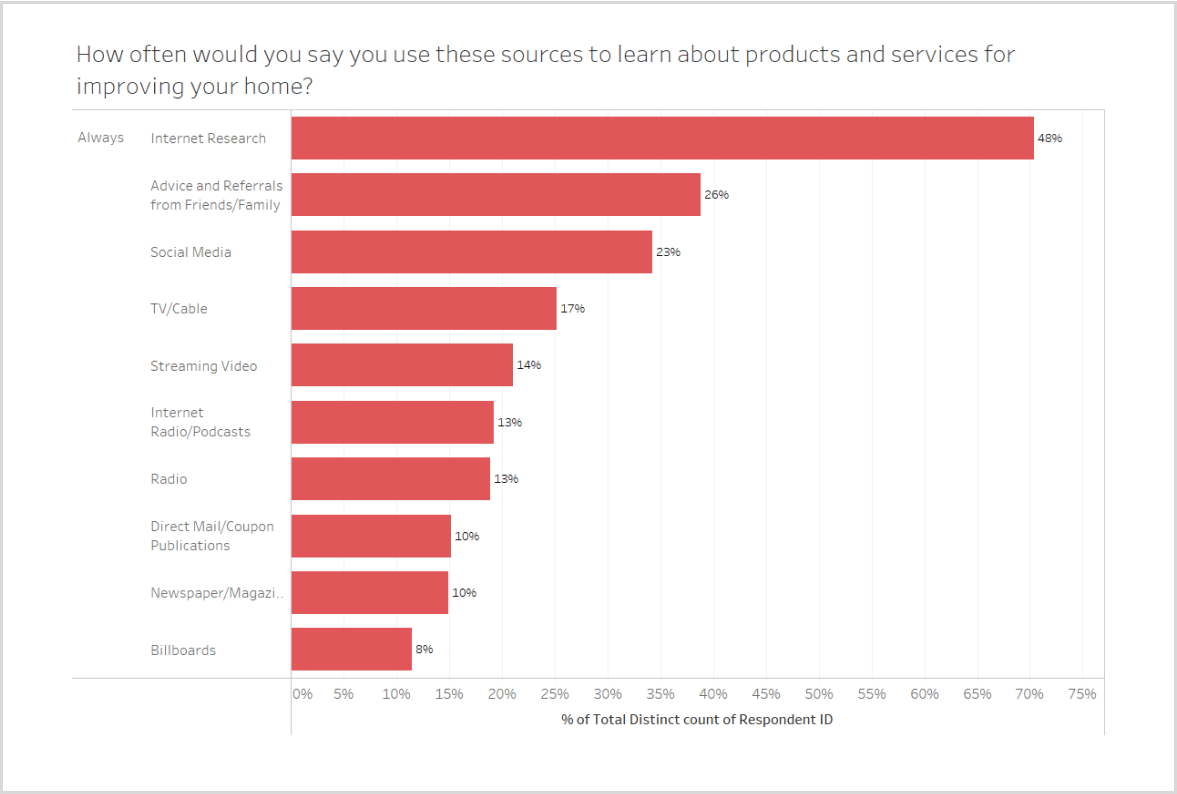2022 National Survey on Consumer Media Habits

Principal – DW Creative Marketing
Dave Wieser is Principal of DW Creative Marketing, whose mission is to “Help the Doers create their legacy.” His career of 20+ years in the advertising and marketing industry has led to a wide range of experiential roles, including media selling, media buying/planning, marketing strategy, research, business intelligence and data analytics…
What did we want to understand?
How do homeowners spend their time with various media throughout the day/week?
What information sources were used to make purchase decisions?
What major home improvement purchases were made in the last three years?
Methodology
QUALIFYING QUESTION
Must be at least 18+ and own a home, condo, or townhouse as the primary residence
METHODOLOGY
Online
SAMPLE TYPE
Panel Fielding
DATES
Sept. 12-13, 2022
SAMPLE SIZE
1,200
QUOTAS
Geo only, 300 per region: Northeast, South, West, and Midwest
SIGNIFICANCE
Confidence level: 95% (based on US Census data of 258,213,334 adults 18+.)
Demographic Samples
- Even distribution among regions
- 78% of respondents were between ages of 25-64
- 74% of respondents had HH Income > $50K
- Household composition skewed married with children




Media Use Per Daypart
We wanted to take a simpler approach than other media studies that focus on metrics like time spent. Respondents could pick more than one media and simply reflect on an easy question that naturally uncovers usage habits.
Morning Media
Not hard to picture that Americans wake up and check their phones, but we were surprised by the prevalence of local news and cable news viewing. Streaming plays a lower role in people’s lives in the morning.

Daytime Media
Internet usage still on top, with streaming taking the number two spot. Are people streaming their favorite Netflix show while “working” from home? Radio usage also jumped during the daytime.

Evening
No surprise streaming takes over in the evening, with internet browsing a close second. Not hard to picture consumers sitting on the couch watching their favorite show while simultaneously checking social media, work email, and shopping online.

Before Bedtime
Who doesn’t check their email once more before bedtime? Streaming also is a close second in usage and cable TV/local news once again round out the three and four spots.

Services and Media Used
This section shows which home improvement projects were most popular in the last three years and the media sources used to research options.
Home Improvements
What is your home improvement “market potential?” The data below may shed some light on high-level insights into demand past three years for a wide range of home improvement investments.

Media Sources “Always” used
Respondents were given a variety of media options and asked to select one of three options with respect to using that media to learn about products and services for the home:
Internet Research is the stand-alone winner, surprisingly chosen more than friends and family. All other media takes a backseat in the role it “always” plays in a purchase decision.

Media Sources “Sometimes” Used
Now we see a larger role for referrals and media in general, with TV/Cable and Direct Mail tieing for the top two media spots.

Media Sources “Never” Used
Never is a strong indicator and we think looking at the bottom rank of internet is the most interesting insight of this data point. In essence, 94% of respondents used the internet at some point to learn about home improvement products and services.

Digital and Traditional Results
We wanted to find out how big the gap between “traditional” and “digital” media use really is. So we grouped each media and all open-ended responses into traditional or digital. Local news, cable TV, radio and direct mail, for example, would fall into the “traditional” category. Streaming, social media, internet browsing, and podcasts, etc. would fall into the digital category.
One of the key findings of our research stunned us: traditional channels are not dead and digital does not dominate. Rather, consumers seem to live in both worlds simultaneously!

